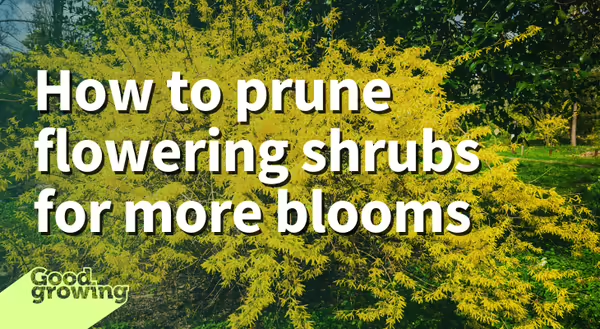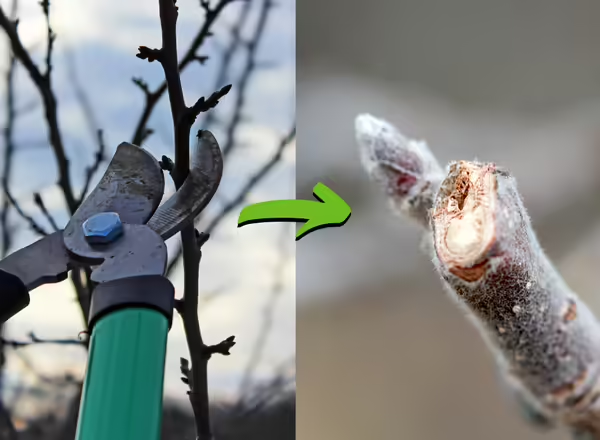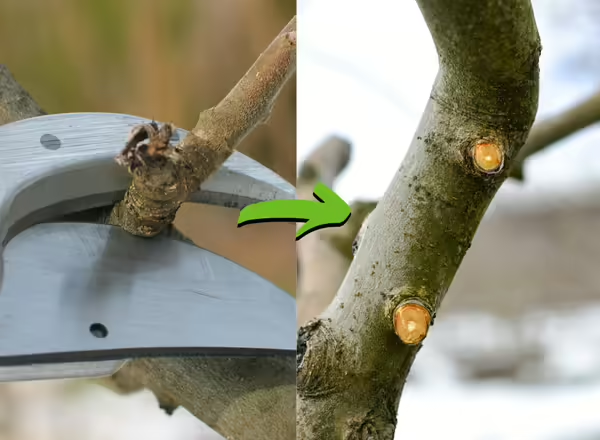
Have you ever seen a lilac bush that only blooms at the very top, or maybe not at all? Perhaps you’ve seen or have a forsythia bush that doesn’t bloom nearly as prolifically as it once did. This often happens due to a lack of or improper pruning. When done correctly, pruning can help flowering shrubs thrive and produce a bounty of blooms.
Why prune?
Pruning flowering shrubs has several benefits. Pruning will help maintain a plant’s shape, remove dead or diseased wood, and open up the canopy, allowing light and air to reach the shrub’s center. For the most part, younger branches and stems will produce more flowers than older plant material. Removing old, unproductive plant material will encourage the growth of new flowering shoots.
When should I prune?
When you prune will depend on when your shrubs bloom. Spring-flowering shrubs, such as lilacs and forsythia, bloom on old wood. This means they set their flower buds the previous year. These plants are typically done blooming by the end of June and should be pruned shortly after they finish blooming in spring. Pruning them in late summer, fall, or winter will remove flower buds and reduce the number of flowers in spring.
On the other hand, summer-flowering shrubs, like most roses and panicle and smooth hydrangeas, bloom on new growth. These should be pruned in late winter or early spring while they’re still dormant. This gives them plenty of time to set new buds for the upcoming blooming season.
Pruning your shrubs
When pruning, start by removing any dead, diseased, or damaged wood. There are two primary types of cuts that are made when pruning shrubs: heading and thinning cuts.


Heading cuts
Heading cuts shorten a branch (or the shrub’s height) while still maintaining the plants’ natural form (if not overdone). They are done by removing part of a branch back to a bud. When making a heading cut, prune at a 45-degree angle, about 1/4 inch above a bud facing the direction you want the new growth to go (don’t use an inward-facing bud).
Thinning cuts
Thinning cuts remove an entire branch or stem to its point of origin. This will help open the canopy, allowing more light to reach the interior and increase air circulation. Thinning cuts can reduce the size of a shrub without drastically altering its natural shape.
Renewal or renovation pruning
If you have shrubs that have become overgrown or aren’t blooming well, they can be renewed/renovated over three years. This is done by removing 1/3 of the oldest stems each year for three years. For example, if your shrub has 12 stems coming from the ground, remove four the first year, then four more the second year, and the remaining for the third year.
Rejuvenation pruning
Another option for overgrown shrubs is to rejuvenate them. This is done by cutting all of the stems back within 4 to 6 inches of the ground in early spring. Doing this will cause the shrub to produce a lot of new shoots during the growing season. These stems should be thinned out, leaving the strongest stems the following year. Rejuvenation pruning works well on multi-stemmed, twiggy shrubs like red-twig dogwood, spirea, and flowering quince. It can also be done to lilacs. However, they may not bloom for several years after being rejuvenated.
Good Growing Tip of the Week: Most shrubs should not be sheared because shearing eliminates a shrub’s natural form and reduces the amount of foliage and flowers in the shrub’s interior, which will be unsightly if the shrub is cut back too much. Because of this, shearing should be reserved for formal hedges with plants such as yew, boxwood, and arborvitae.
Sign up for our emails! Want to get notified when new Good Growing posts are available? SIGN ME UP
Give us feedback! How helpful was this information (click one): Very helpful | Somewhat helpful | Not very helpful
MEET THE AUTHOR
Ken Johnson is a Horticulture Educator with University of Illinois Extension, serving Calhoun, Cass, Greene, Morgan, and Scott counties since 2013. Ken provides horticulture programming with an emphasis on fruit and vegetable production, pest management, and beneficial insects. Through his programming, he aims to increase backyard food production and foster a greater appreciation of insects.